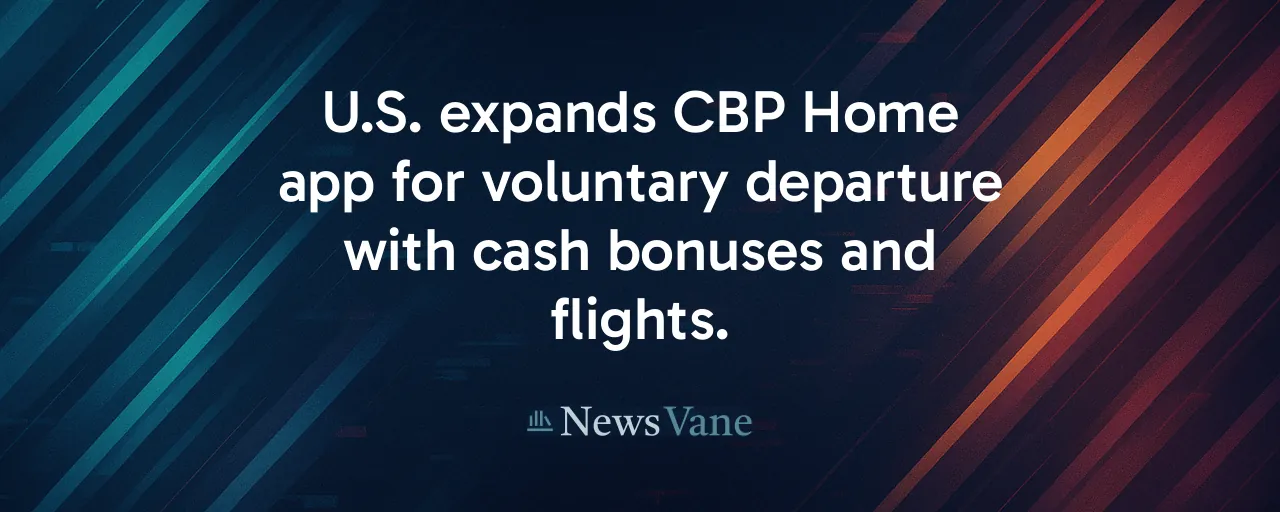A Bold Step in Immigration Policy
The U.S. Department of Homeland Security recently expanded its CBP Home mobile app, adding Simplified Chinese and Hindi to help more immigrants access its services. Launched in May 2025, the app is central to Project Homecoming, a program encouraging undocumented immigrants to voluntarily leave the country. With free flights, a $1,000 cash bonus, and forgiven fines, the initiative aims to streamline deportations while offering a dignified exit. This move has ignited a broader conversation about fairness, economic impacts, and the human toll of such policies.
For the estimated 11 million undocumented immigrants in the U.S., the app represents both opportunity and pressure. It promises a way to avoid detention and preserve future legal reentry options. The threat of aggressive enforcement looms for those who stay. This tension underscores a critical question: can a mobile app truly balance compassion with compliance in a deeply divisive issue?
How the Program Works
The CBP Home app allows users to schedule government-funded flights to their home country or another nation where they hold legal status. Upon departure, confirmed through biometric data, participants receive a $1,000 exit bonus. The program also waives civil fines for overstaying visas or ignoring deportation orders. Since its launch, over 7,000 people have registered, with 3,000 confirmed departures by June 2025, including a notable charter flight of 64 individuals in May.
Adding Chinese and Hindi expands the app's reach, targeting communities with significant undocumented populations. The Department of Homeland Security estimates the program costs about $5,000 per person, a sharp contrast to the $17,121 average for forced removals by Immigration and Customs Enforcement. This cost-saving angle drives much of the program's appeal, but its success depends on participation and cooperation from foreign governments for travel documents.
Economic and Social Ripples
Economists highlight both benefits and risks. Voluntary departures could save taxpayers billions, with projections suggesting a $13 billion reduction in federal removal costs over four years. Fewer detentions might also ease pressure on overcrowded facilities. Large-scale exits could disrupt industries like agriculture and construction, which rely heavily on undocumented labor. Price shocks for consumers may follow if participation grows significantly.
Communities feel the strain too. Families with mixed immigration statuses face agonizing choices about separation or relocation. Some schools report higher absenteeism as fear of raids spreads. While the app aims to reduce detention, the psychological toll of deciding under pressure cannot be ignored. These dynamics reveal the complex interplay between policy goals and human realities.
Legal and Ethical Crossroads
Legal scholars raise concerns about the program's foundation. The $1,000 bonuses lack clear congressional funding, sparking debates over executive authority. Privacy issues also emerge, as the app collects sensitive data like biometrics and geolocation. Some worry about potential misuse or breaches, especially for vulnerable populations. International laws prohibiting the return of asylum seekers to dangerous countries complicate the program's one-size-fits-all approach.
Ethically, the incentives may feel coercive to those with deep ties to the U.S., such as long-term residents or parents of citizen children. Without guaranteed reentry options, the promise of future legal pathways remains vague. These challenges highlight the need for transparency and oversight to ensure the program respects individual rights while meeting its objectives.
Lessons From the Past
History offers context. Voluntary departure has been part of U.S. immigration law since 1952, but earlier efforts lacked cash incentives. Policies in Oklahoma (2007) and Arizona (2010) pushed self-deportation through strict enforcement, leading to modest exits but also economic disruption. In contrast, the 1986 Immigration Reform and Control Act's legalization program boosted tax revenues and economic growth, suggesting alternative approaches could yield broader benefits.
Today's program echoes past debates but introduces new tools, like smartphone technology. The CBP One app, used for asylum scheduling in 2023, set a precedent for digital immigration processes. Experts caution that without legislative clarity on reentry bars or robust exit verification, the program's long-term impact remains uncertain.
Bridging the Divide
Finding common ground is possible. Providing free legal counseling before departure decisions could empower immigrants to make informed choices. A clear appropriation for bonuses would address funding disputes, while written guarantees about reentry eligibility might build trust. Targeted waivers for long-term residents with U.S. citizen children could soften the program's impact on families. Bipartisan oversight of app data practices would further ensure accountability.
These steps require cooperation across divides. Policymakers, community leaders, and foreign governments need to align to make the program practical and humane. The app's expansion is a chance to refine a contentious policy, prioritizing dignity and clarity for all involved.
Looking Ahead
The CBP Home app's new languages mark a pivotal moment in U.S. immigration policy. By blending technology, incentives, and enforcement, the program seeks to reshape how deportations unfold. Its success hinges on participation, trust, and careful execution, all while navigating economic, legal, and social complexities.
For immigrants, the decision to use the app is deeply personal, shaped by family ties, safety concerns, and uncertain futures. As the program evolves, its ability to balance efficiency with empathy will determine its legacy. Transparent policies and inclusive dialogue can guide the way.
Ultimately, this initiative reflects a broader challenge: crafting immigration solutions that respect both laws and lives. The path forward lies in listening to all stakeholders, from immigrants to taxpayers, and building systems that are fair, sustainable, and grounded in reality.
